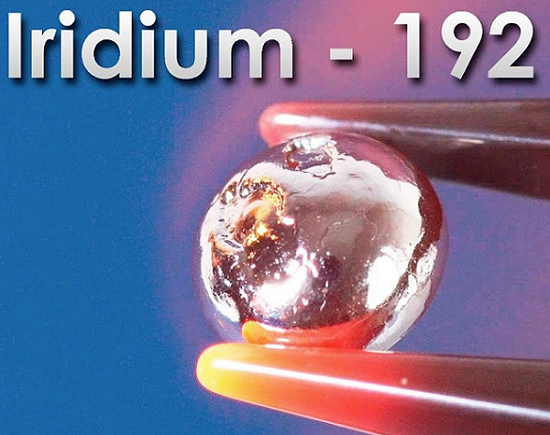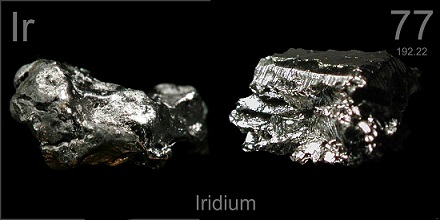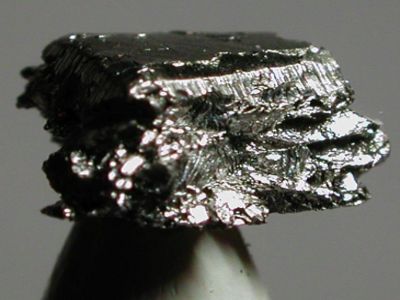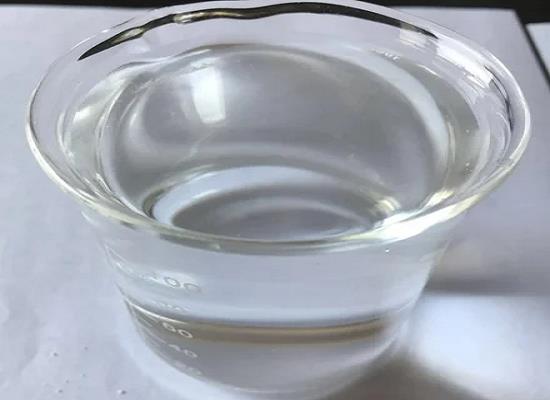Iridium nanomaterials: synthesis and applications
General Description
The synthesis of Iridium nanomaterials presents challenges due to the formation of oxides, impacting their properties. Techniques such as XAS, XPS, and XRD are crucial for understanding their nature. In catalysis, Iridium nanoparticles exhibit remarkable chemoselectivity and stability, making them valuable for diverse reactions. They also show promise in electrochemistry, particularly in OER catalysis crucial for sustainable energy production, as well as in various other reactions. The synthesis of Iridium nanomaterials significantly influences their properties and performance across a wide range of applications, showcasing their multifaceted potential in catalysis and electrochemistry.
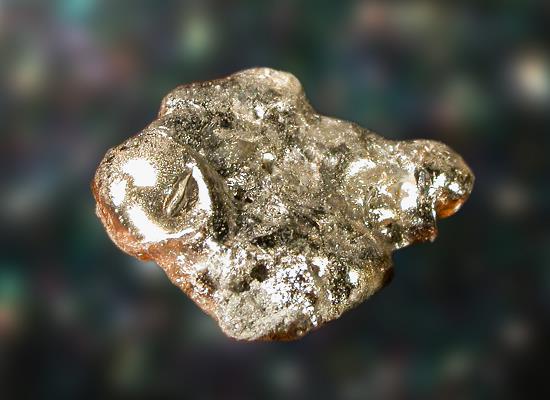
Figure 1. Iridium
Synthesis
The synthesis of Iridium nanomaterials presents challenges due to the formation of oxides (IrOx) such as IrO2. The development of IrO2 nanoparticles can be achieved through processes like thermal oxidation treatments, with the size of Iridium nanoparticles influencing the size and activity of IrO2 nanoparticles. Conversely, the reduction of IrO2 nanoparticles can lead to the formation of Iridium nanoparticles. Despite Iridium nanoparticles being expected to have an oxidation degree of 0 and IrO2 having an oxidation degree of IV, the formation of IrOx can lead to the misrepresentation of materials as Iridium nanoparticles, when they are actually made of IrO2 nanoparticles or are active under an oxidized form. To accurately understand and rationalize the properties of these materials, it is crucial to provide detailed information on their exact nature. Techniques like X-ray absorption spectroscopy (XAS), X-ray photoelectron spectroscopy (XPS), and X-ray diffraction (XRD) can be used to assess the oxidation degree and coordination environment of the material. XAS techniques require access to synchrotron facilities, while XPS and XRD can provide valuable insights into the nature of the materials, although challenges may arise, especially with smaller nanoparticles. In summary, the synthesis of Iridium nanomaterials involves careful consideration of the formation of oxides and the characterization of the resulting materials, with techniques such as XAS, XPS, and XRD playing important roles in understanding the oxidation state and coordination environment. 1
Applications
Catalysis
Iridium nanomaterials have found extensive applications in catalysis, showcasing their versatility and reliability in a myriad of chemical reactions. Their catalytic prowess spans hydrogenation of diverse substrates, C-C and C-O bond cleavage, steam reforming, oxidation, NOx reduction, and biomass conversion. These materials exhibit remarkable chemoselectivity and can be reused multiple times due to their resistance to sintering. The activity, selectivity, and stability of iridium nanoparticles (NPs) are heavily influenced by supporting materials, oxidation state, reaction conditions, and experimental parameters. Notably, iridium demonstrates excellent chemoselectivity in hydrogenation reactions, such as indole hydrogenation and nitro group hydrogenation. Moreover, it has shown potential in selective ring opening reactions for the valorization of petroleum products. Furthermore, iridium NPs have exhibited tolerance to sulfur and nitrogen compounds, making them promising candidates for various catalytic processes. Overall, the varied applications and robust performance of iridium nanomaterials underscore their significance in catalysis and chemical synthesis. 2
Electrochemistry
Iridium nanomaterials have found diverse and promising applications in electrochemistry. The stability of Iridium nanomaterials across a wide electrochemical potential range makes them relevant for various electrochemical processes in both alkaline and acidic media. One of the main applications of Iridium lies in catalyzing the oxygen evolution reaction (OER), at the heart of water splitting devices crucial for sustainable energy production. Additionally, Iridium nanomaterials have demonstrated suitability as catalysts for the hydrogen evolution reaction (HER) and are expected to exhibit catalytic properties for the oxygen reduction reaction (ORR) as well as other reactions such as the hydrogen oxidation reaction (HOR), CO2 reduction (CO2RR), methanol oxidation reaction (MOR), and more. The synthesis of Iridium nanomaterials significantly influences their properties and performance in various applications. For example, the choice of solvent purity and reducing agent concentration can impact OER activity, as highlighted in a study by Lettenmeier et al. Additionally, the application of Iridium nanomaterials extends beyond electrochemical processes to include capacitors, electrochromic devices, neural electrodes, corrosion resistance, vanadium redox flow batteries, battery cathodes, analytical methods for flavonoids, and more. This illustrates the multifaceted potential of Iridium nanomaterials across a wide range of electrochemical and related applications. 3
Reference
1. Quinson J. Iridium and IrOx nanoparticles: an overview and review of syntheses and applications. Adv Colloid Interface Sci, 2022, 303: 102643.
2. Ji YG, Wei k, Liu T, Wu L, Zhang WH. “Naked” Iridium(IV) Oxide Nanoparticles as Expedient and Robust Catalysts for Hydrogenation of Nitrogen Heterocycles: Remarkable Vicinal Substitution Effect and Recyclability. Adv Synth Catal, 2017, 359: 933-940.
3. Feng J, Lv F, Zhang W, Li P, Wang K, Yang C, Wang B, Yang Y, Zhou J, Lin F, Wang GC, Guo S. Iridium-Based Multimetallic Porous Hollow Nanocrystals for Efficient Overall-Water-Splitting Catalysis. Adv Mater, 2017, 29(47).
);You may like
Related articles And Qustion
See also
Lastest Price from Iridium manufacturers

US $10.00/g2023-12-25
- CAS:
- 7439-88-5
- Min. Order:
- 1g
- Purity:
- 99.95%
- Supply Ability:
- 200000

US $1.00/KG2023-01-10
- CAS:
- 7439-88-5
- Min. Order:
- 1KG
- Purity:
- 99%
- Supply Ability:
- 300kg

